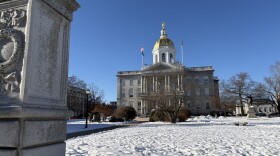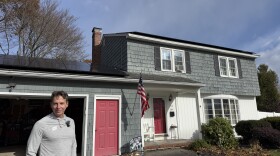A new program to help low and moderate income Granite Staters connect with community solar projects is one step closer to getting off the ground, after New Hampshire’s Department of Energy opened applications for project developers planning community solar arrays.
Community solar projects can help connect people who don’t have solar panels themselves with the benefits of that energy – specifically, the extra credits those who have their own solar panels see on their monthly bills.
But matching up those projects with customers has been a struggle for some developers. The new process approved by the Department of Energy is meant to help pair those developers up with electric customers who qualify for the state’s Electric Assistance Program.
Customers chosen to be part of the community solar project’s group would get a credit on their monthly electricity bill. Group members will be chosen by their utility company based on their eligibility for electric assistance and their zip code. People who live closest to the proposed solar arrays will be chosen first, and utilities are expected to use randomized selection if there are more eligible customers in the area than there are spots in the community solar group.
Customers will be able to opt out of the program if they’re chosen but don’t wish to participate.
The program is only available to customers of Liberty, Unitil, and Eversource – members of the New Hampshire Electric Cooperative or a municipal utility are not able to join.
Applications from solar developers are due to state officials on Feb. 29.
The projects proposed must be new solar panels on rooftops, parking areas, or ground arrays in New Hampshire, according to guidance issued by state officials. At least a quarter of the project’s total credits from their excess electric generation must go to lower and moderate income customers that are assigned to their project.
The state has set an annual cap of 6 megawatts for new community solar projects, and each individual project must be under 1 megawatt.








